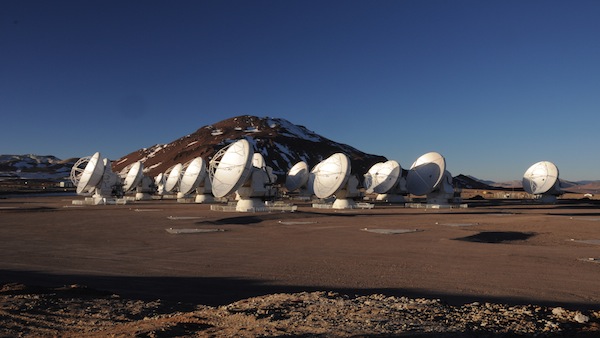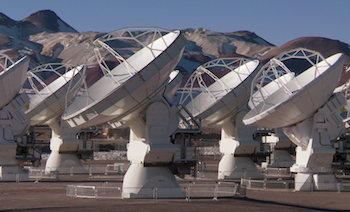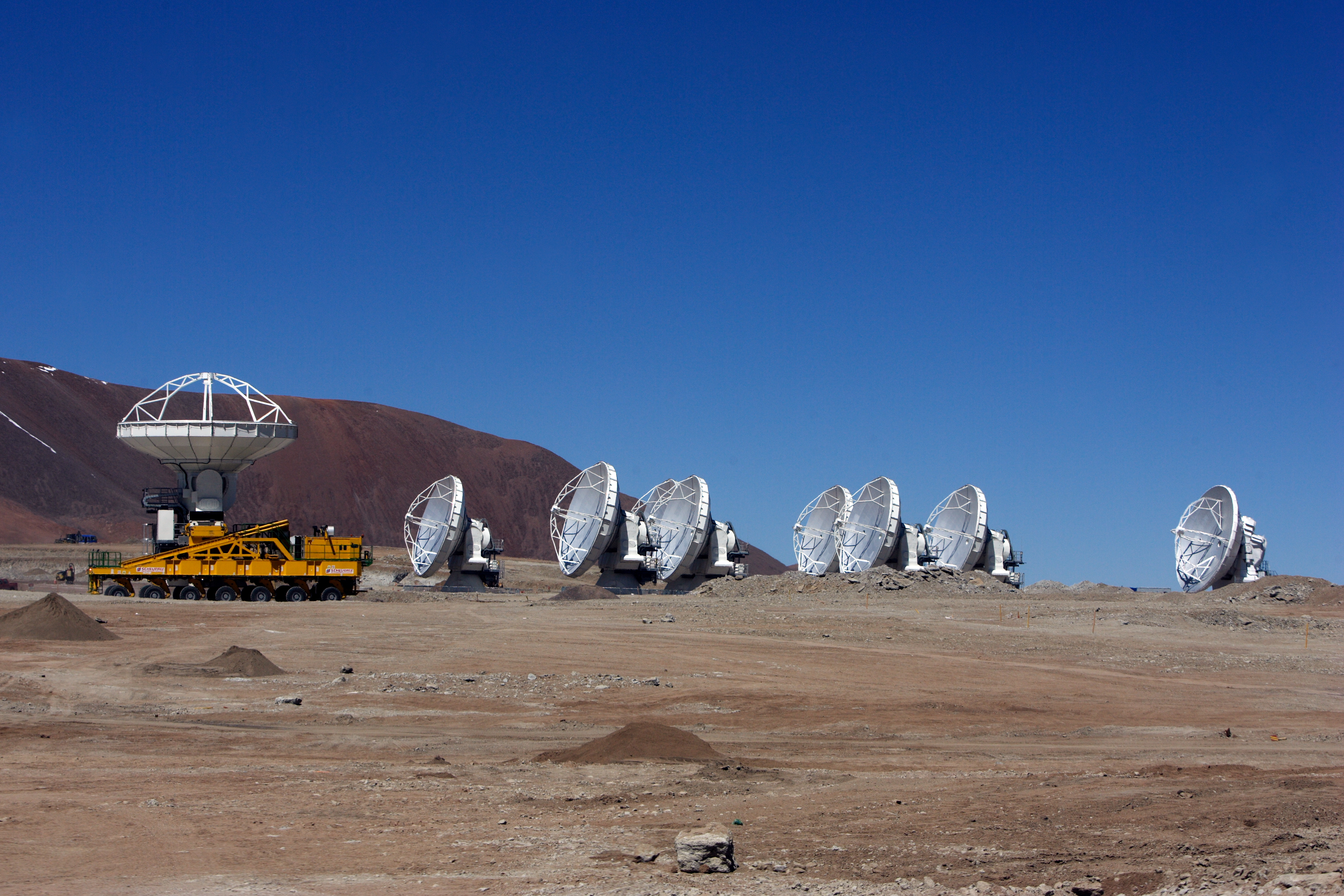October 3, 2011
Contact:
Tania Burchell, ALMA Public Information Officer
Charlottesville, VA
(434) 244-6812
tburchel@nrao.edu
Antennas by General Dynamics Enable "Early Science" for What Will Become the World's Most Advanced Radio Telescope
Read this Story
Read related story: First Astronomical Images from ALMA
Read related story: ALMA Opens Its Eyes
For guided video tours of ALMA, please enjoy our ALMA Explorer.

ABOVE: The Atacama Large Millimeter/submillimeter Array at its 16,500 ft elevation site in northern Chile. Still under construction, ALMA is the most powerful telescope of its kind in the world. At the time of this photo, 19 radio telescopes were in the array. Upon completion in 2013, 66 radio telescopes will fan over a nearly 100 square mile area.
CREDIT: W. Garnier, ALMA (ESO/NAOJ/NRAO)
|

ABOVE: In this set of video clips, we establish ALMA's location on the Chajnantor Plain of northern Chile then zoom in to see its many styles of telescopes working together to observe the skies as one.
CREDIT:W. Garnier, ALMA (NRAO/NAOJ/ESO)
|

ABOVE: View from the center of the Atacama Large Millimeter/submillimeter Array at an elevation of 16,500 feet on the Chajnantor Plain in northern Chile. Each of these radio telescopes has a dish spanning nearly 40 feet across.
CREDIT: Tania Burchell, NRAO/AUI/NSF
|

ABOVE: The Atacama Large Millimeter/submillimeter Array can be rearranged to suit different astronomy observing needs. During their relocations, the 115-ton telescopes are kept powered on the back of the gentle monster trucks, ALMA Transporters.
CREDIT: Carlos Padilla, NRAO/AUI/NSF
|




